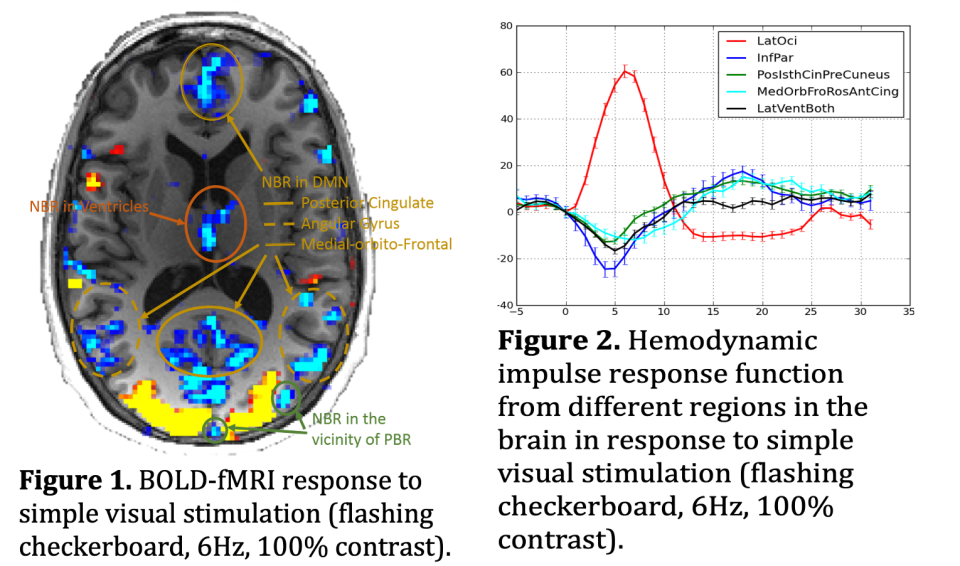The Quantitative Neuroimaging Laboratory’s (QNL’s) main research project is investigating the neural and neurophysiological mechanisms underpinning the negative blood-oxygenation-level dependent (BOLD) response (NBR). Emerging evidence sheds light on the mechanism underlying the task-based positive BOLD response; however, the accompanying NBR is mostly unknown (Bentley et al.: 2016; Hayden et al.: 2009; Mullinger et al.: 2014), even though studies investigating the NBR started as early as the introduction of BOLD functional magnetic resonance imaging (fMRI) (BOLD-FMRI) (Shmuel et al.: 2002; Smith et al.: 2004). But brain regions exhibiting specific-task-oriented NBR may have separate underlying mechanisms, which would explain the lack of progress. For instance, the NBR detected in the pathology bearing region’s (PBR’s) vicinity has been explained by the neurovascular system’s hemodynamics rather than by underlying neuronal activity (Hu and Huang: 2015); however, the NBR detected in the brain Default Mode Network (DMN) regions has been associated with suppression of neuronal activity (Bentley et al.: 2016; Hayden et al.: 2009).
The QNL categorizes the NBR into four different groups based on its possible underlying mechanism: 1) NBR in the vicinity of the PBR (Hu and Huang: 2015); 2) NBR in the contralateral hemisphere (Smith et al.: 2004); 3) NBR in the DMN regions (Hayden et al.: 2009); 4) NBR in the ventricles (Bright et al.: 2014; Thomas et al.: 2013). Because the NBR’s different types likely have distinct underlying mechanisms, the QNL feels this categorization is important.
Related Publications:
Q. R. Razlighi et al., Resting State Inter and Intra Hemispheric Human Brain Functional Connectivity, Conf Proc IEEE Eng Med Biol Soc: 2013 Jul., pp. 6522-6525, Osaka, Japan.
Q. R. Razlighi et al., Unilateral disruptions in the default network with aging in native space, Brain Behav.: 2014, vol. 4, no. 2, pp. 143-157.
Software Released:
Coming Soon


